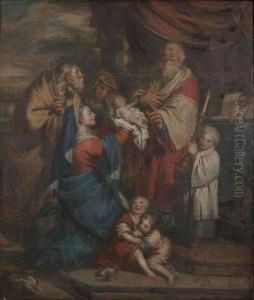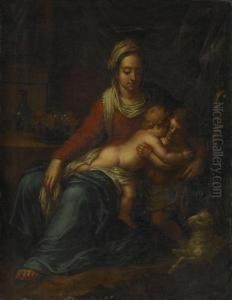Jan Jozef Verhaegen Paintings
Jan Jozef Verhaegen was a Belgian painter born on November 9, 1795, in Mechelen, Belgium. He was primarily known for his historical and genre paintings. Verhaegen's early life and training are not extensively documented, but it is known that he was active during a period when Belgium was undergoing significant political and cultural changes, following its independence from the Netherlands in 1830.
Verhaegen developed his artistic skills during a vibrant period in Belgian art, which was marked by the Romantic movement. His works often depicted scenes from Belgian history, folklore, and mythology, capturing the spirit and nationalism of the newly independent Belgium. He was part of the artistic milieu that sought to construct a national identity through visual arts, literature, and music.
Although not as widely recognized as some of his contemporaries, Verhaegen's contributions to Belgian art were notable. His paintings were characterized by a meticulous attention to historical detail and a dramatic use of light and shadow, which was typical of the Romantic style of the time. He was skilled in creating a sense of depth and atmosphere, which brought his historical scenes to life.
Jan Jozef Verhaegen's career was also marked by his participation in the art community in Belgium. He exhibited his work at various salons and was a member of artistic societies, which played a crucial role in the cultural life of 19th-century Belgium. His paintings were collected by Belgian patrons and institutions, contributing to the cultural heritage of the country.
The latter part of Verhaegen's life saw Belgium's art scene transition toward Realism and the early beginnings of Impressionism. However, he remained true to the Romantic style throughout his life. Jan Jozef Verhaegen died on March 2, 1855, in Mechelen. While he may not have achieved the same level of fame as some of his peers, his work remains a valuable part of the historical and artistic legacy of Belgium.

